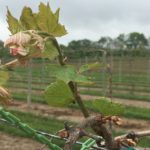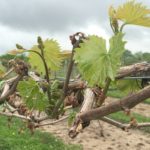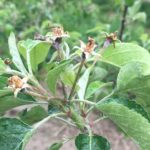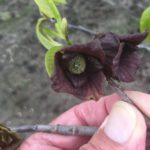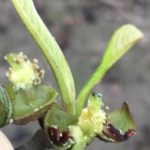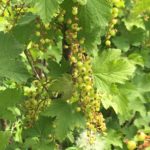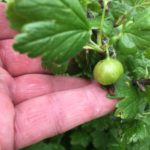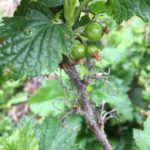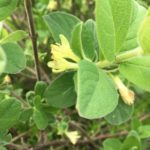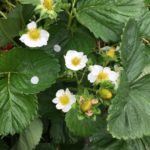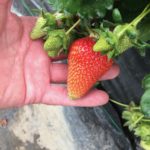Fruit crops continue development with slow recovery from the freeze damage of May 9. In grapes, it is apparent that some varieties have the potential for a full crop despite significant damage. However, some are very slow to recover and it is doubtful that they will have much, if any crop this year. Apples in Lafayette are slightly beyond petal fall. It’s still too early to tell how severe the damage is, but clearly there are a few late blooms and a few live fruitlets in our plantings. Whether they stay on the trees or not is yet to be seen. See articles on freeze damage and thinning in this issue. Pawpaw flowers look okay, though several have dead stigmas. It’s not clear if they have already been pollinated or if they were killed by cold. Like apples, time will tell whether the fruits stay on the trees or not. Among the berry crops, blackberries are by far the most damaged. Raspberries look pretty good, especially black raspberries. Gooseberries and currants also look fine and fruit is sizing up nicely. We have a few honey berry plants (Lonicera) that are still blooming and have a nice crop of fruit set. Strawberries across the state are variable, even where frost control measures were employed. However, Dr. Ingwell’s high tunnel strawberries look fantastic, proving that there really is an advantage to growing crops in a high tunnel.
- Grape shoot that survived the freeze
- Grape shoots growing from basal nodes.
- Apples post bloom. Most of these appear to be dead
- Pawpaw flowers in bloom
- Pawpaw fruits cut to show healthy tissue
- White currant post bloom
- Gooseberry fruit
- Black currant fruit and flowers
- Honey berry in bloom showing no freeze damage
- High tunnel strawberry flowers
- High tunnel strawberry fruit
